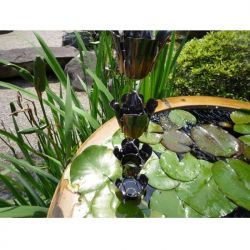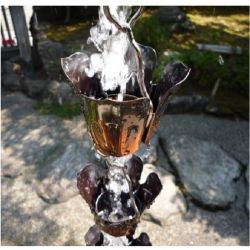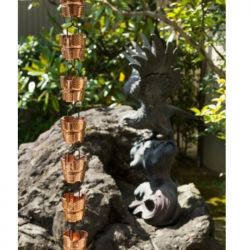Order Helpline: 0330 223 1731
- Rainwater
- Coping & Fascia
- Architectual
- Drainage
- Roof
-
- Rainwater
- Coping & Fascia
- Architectual
- Drainage
- Roof
-
Aluminium
-
-
Aluminium Gutters
-
-
Cast Aluminium
-
-
-
-
-
Rainguard
-
-
-
Cast Aluminium Gutters
-
-
-
-
-
-
-
-
-
Rainguard
-
-
-
-
Cast Iron
-
-
Cast Iron Gutters
-
-
Steel
-
-
-
Alumasc Infinity
-
-
-
-
-
Steel Gutters
-
-
-
-
-
Alumasc Infinity
-
-
-
-
-
-
-
-
Plastic
-
-
Plastic Gutters
-
-
Copper & Zinc
-
-
Alumasc Infinity
-
-
-
Lindab
-
-
-
Copper & Zinc Gutters
-
-
-
Alumasc Infinity
-
-
-
-
-
Lindab
-
-
-
-
GRP
-
-
GRP Gutters
-
-
-
-
GRP Hoppers
-
-
-
GRP Gutters
-
-
-
GRP Gutters
-
-
-
-
-
-
-
GRP Hoppers
-
-
-
-
Aluminium Coping
-
-
Alumasc Skyline
-
-
-
Alutec Evoke
-
-
-
-
Aluminium Coping
-
-
-
Alumasc Skyline
-
-
-
-
-
Alutec Evoke
-
-
-
-
-
-
Fascia & Soffit
-
-
Skyline Aluminium
-
-
-
-
GRP
- Cornice Profile A
- Cornice Profile B
- Cornice Profile C
- Fascia Soffit Profile F
- Cornice Fascia Profile G
- Cornice Profile H
- Cornice Fascia Profile J
- Cornice Fascia Profile K
- Cornice Fascia Profile L
- Cornice Fascia Profile M
- Fascia Board Profile N
- Fascia Board Profile P
- Fascia Band Profile Q
- Band Course Profile R
- Band Course Profile S
-
-
-
-
Fascia & Soffit
-
-
-
Skyline Aluminium
-
-
-
-
-
-
-
-
GRP
-
- Cornice Profile A
- Cornice Profile B
- Cornice Profile C
- Fascia Soffit Profile F
- Cornice Fascia Profile G
- Cornice Profile H
- Cornice Fascia Profile J
- Cornice Fascia Profile K
- Cornice Fascia Profile L
- Cornice Fascia Profile M
- Fascia Board Profile N
- Fascia Board Profile P
- Fascia Band Profile Q
- Band Course Profile R
- Band Course Profile S
-
-
-
-
-
-
-
Cills, Trims & Flashings
-
-
Skyline Aluminium
-
-
-
GC Aluminium
-
-
-
-
-
Cills, Trims & Flashings
-
-
-
Skyline Aluminium
-
-
-
-
-
GC Aluminium
-
-
-
-
-
-
-
-
Modular Systems
-
-
Door Canopies
-
-
-
Window & Door Pod Kits
-
-
-
Column Casing
-
-
-
Modular Systems
-
-
-
Door Canopies
-
-
-
-
-
Window & Door Pod Kits
-
-
-
-
-
Column Casing
-
-
-
-
Cladding
-
-
Cladding
-
-
Door Canopies
-
-
Made in Sweden
-
-
-
Aluminium Skyline
-
-
-
Door Canopies
-
-
-
Made in Sweden
-
-
-
-
-
Aluminium Skyline
-
-
-
-
Rain Chains
-
-
Made In Japan
-
-
-
Rain Chains
-
-
-
Made In Japan
-
-
-
-
Street Furniture
-
-
-
Hargreaves
-
-
-
Street Furniture
-
-
-
-
-
Hargreaves
-
-
-
-
Roof Lights & Lanterns
-
-
Flat Roof Light
-
-
-
Flat Roof Lanterns
-
-
-
Roof Lights & Lanterns
-
-
-
Flat Roof Light
-
-
-
-
-
Flat Roof Lanterns
-
-
-
-
Roof Outlets
-
-
Roof Outlets
-
-
Metal Soil & Waste
-
-
-
-
Steel Pipe
-
-
-
Access Cover & Frames
-
-
-
Metal Soil & Waste
-
-
-
-
-
-
-
Steel Pipe
-
-
-
-
-
Access Cover & Frames
-
-
-
-
Plastic Soil & Waste
-
-
-
-
-
Aluminium Roof Outlets
-
-
-
Plastic Soil & Waste
-
-
-
-
-
-
-
Marley Above Ground
-
-
-
-
Gullies
-
-
-
-
-
Direct Connection
-
-
-
Gullies
-
-
-
-
-
-
-
Direct Connection
-
-
-
-
-
-
Linear Channels
-
-
-
-
-
Aliaxis
-
-
-
Linear Channels
-
-
-
-
-
-
-
-
-
Harmer
-
-
-
-
Shower Drains
-
-
-
Ryno Pedestals
-
-
-
Aluminium Decking System
-
-
-
Roof Channels
-
-
-
Shower Drains
-
-
-
-
-
Caroflow
-
-
-
-
-
ACO
-
-
-
-
-
PAM Vortx
-
-
-
-
-
PAM Vortx
-
-
-
-
Couplings
-
-
Couplings
-
-
Seamed Roofing
-
-
Roof Systems
-
-
-
Roof Systems
-
-
-
Seamed Roofing
-
-
-
Roof Systems
-
-
-
-
-
Lindab Steel Roof System
-
-
-
-
Flat Roof
-
-
Flat Roof
-
-
Roof Lights
-
-
Flat Roof Lights
-
-
-
Roof Light Lanterns
-
-
-
Roof Lights
-
-
-
Flat Roof Lights
-
-
-
-
-
Roof Light Lanterns
-
-
-
-
Pedestals
-
-
Harmer Modulock
-
-
-
-
-
Pedestals
-
-
-
Harmer Modulock
-
-
-
-
-
-
-
-
Aluminum Deck
-
-
-
GC Aluminum Decking
-
-
-
Aluminum Deck
-
-
-
-
-
GC Aluminum Decking
-
-
-
- Inspiration Video Gallery Case Studies
Rain Chains from Japan
Japanese rain chains, known as kusari-doi, are centuries-old architectural features that transform ordinary rainfall into an elegant display of water and sound. Instead of hiding water in closed downpipes, rain chains from Japan celebrate it, guiding rainwater from the roof to the ground in a visible cascade.
Originally used on Japanese temples and tea houses, they symbolised purity and harmony with nature while serving as a practical drainage system. Today, these chains bring the same balance of form and function to modern homes, gardens, and commercial spaces across the world.
Why Choose Japanese Rain Chains?
Functional Art – Each rainfall turns into a natural water feature, with chains channeling droplets into streams or bowls, creating both visual movement and a soothing soundscape.
Cultural Heritage – With origins tracing back to the Azuchi–Momoyama period (late 1500s), kusari-doi reflect Japan’s philosophy of blending simplicity, utility, and beauty.
Durable Craftsmanship – Available in copper, stainless steel, brass, or mixed metals, these chains resist rust, develop beautiful patinas over time, and require less upkeep than traditional downpipes.
Eco-Friendly Design – Open channels reduce the risk of blockages, and rain chains can be used to feed water butts, barrels, or decorative basins, promoting sustainable water use.
Styles & Applications
Cup-Style Rain Chains – Decorative cups link down the chain, slowing water flow and minimising splash. Ideal for heavier rainfall and ornamental finishes.
Link-Style Rain Chains – Simplified open links for a minimalist look, best suited for lighter rainfall or modern architectural settings.
Perfect For:
Residential gardens seeking calm, water-driven ambience
Entrances and courtyards where first impressions matter
Heritage restorations requiring authentic detail
Contemporary architecture aiming to integrate natural water features
Benefits of Rain Chains from Japan
Architectural Elegance - Transforms functional drainage into a design statement
Relaxing Water Sound - Creates a natural, calming ambience during rainfall
Low Maintenance - Easier to clean, less prone to blockages compared with closed downpipes
Sustainable Water Use - Direct rain into barrels, basins, or garden features
Heritage Meets Modern - Suits both traditional and contemporary builds
Bring Japanese Tradition to Your Project
Whether enhancing a garden, replacing downpipes on a listed building, or adding character to a new build, Japanese rain chains offer timeless charm and practical performance. Call 0330 223 1731 or email sales@guttercentre.co.uk to explore our range of authentic rain chains from Japan and discover how they can elevate your space.
Toh Rain Chain made in Japan
Take Rain Chain made in Japan
Take Copper Rain Chain made in Japan
Migumo Rain Chain made in Japan
Estimated delivery 3 working days

















